- Quick Read
- Deep Read ( 7 Min. )

Why is Christian Science in our name?
Our name is about honesty. The Monitor is owned by The Christian Science Church, and we’ve always been transparent about that.
The Church publishes the Monitor because it sees good journalism as vital to progress in the world. Since 1908, we’ve aimed “to injure no man, but to bless all mankind,” as our founder, Mary Baker Eddy, put it.
Here, you’ll find award-winning journalism not driven by commercial influences – a news organization that takes seriously its mission to uplift the world by seeking solutions and finding reasons for credible hope.
Explore values journalism About usIn Today’s Issue
- Behind breakup of Trump-Macron bromance, a deeper US-Europe divide
- Amazon’s new HQ picks stir debate over rise of ‘superstar cities’
- Why automotive automation may reach first for big rigs
- In Afghan vote, an optimistic, energetic young guard targeted the old
- The best reads of November? Here are your Monitor staff picks.
Monitor Daily Podcast
- Follow us:
- Apple Podcasts
- Spotify
- RSS Feed
- Download
TODAY’S INTRO
Why ‘border’ is the most important word in politics today
 Mark Sappenfield
Mark Sappenfield
Today, like many days, borders were big in the news. In one corner of Europe, the Czech Republic joined Hungary, Austria, and the United States in rejecting a United Nations effort to set a global standard for the treatment of migrants. In another, British Prime Minister Theresa May presented her draft plan for removing the country from the European Union.
In both cases, the underlying motive is substantially the same: to more closely control the outside forces that can reshape a country. You could justifiably call that the most vexing issue facing democracies today. So it’s important to understand why this keeps percolating in so many different forms.
In many ways, we’re struggling to adapt to our own success. The past 70 years have showed incontrovertibly that free markets and universal human rights are good. They have dramatically improved wealth and well-being worldwide. But they don’t care about borders.
Free markets compel us to collaborate. Whether you’re Australian or Armenian, they want us to work together to create better products and bigger markets. Human rights compel us to focus on the humanity that binds us. They don’t care where the refugee is going from or to; they care about ensuring her health, security, and innate value.
That puts the border issue in a new light: How can we best protect the good we already have, and how can we best fuel the good promised by progress?
Now on to our five stories for today, which include a look at “super cities” and inequality, automation and the future of work, and the surprising optimism of many young Afghans.
Share this article
Link copied.

Help fund Monitor journalism for $11/ month
Already a subscriber? Login

Monitor journalism changes lives because we open that too-small box that most people think they live in. We believe news can and should expand a sense of identity and possibility beyond narrow conventional expectations.
Our work isn't possible without your support.
Behind breakup of Trump-Macron bromance, a deeper US-Europe divide
A tense weekend in Paris between the French and American presidents showed that political relationships are hard to maintain when the players are so far apart in how they see the world.

Viewed through the European and much of the American media, President Trump’s weekend in Paris for the commemorations of the World War I armistice was largely an optics disaster. The event was meant to showcase transatlantic unity and the sacrifice of the American “doughboys” who came to the rescue of peace and freedom in Europe. Instead it highlighted transatlantic tensions and an American president estranged from his peers. At the center was a series of clashes between Mr. Trump and his host, French President Emmanuel Macron, on their visions for world order. The clash of visions will almost certainly have profound repercussions in already-foundering transatlantic relations – in everything from trade and economic ties to defense cooperation, the future of NATO, and on to the strength of the West as a beacon for the rest of the world. Says Heather Conley, director of the Europe Program at the Center for Strategic and International Studies: “We are in a moment of transition, when we are moving away from the international system that was developed by ‘the greatest generation’ and which depended so heavily on American leadership, and there’s tremendous uncertainty about what will replace it.”
Behind breakup of Trump-Macron bromance, a deeper US-Europe divide

It was clear from that first power-grip handshake a year ago between President Trump and French President Emmanuel Macron that this was one bromance that was not destined to last.
There were expressions of deep friendship between the two leaders, and even a White House state dinner in April feting both Mr. Macron and the Franco-American bond. But the fissures have since only grown between a self-proclaimed nationalist and anti-European-Union American president and a French president who has emerged as an ardent multilateralist and chief defender of an integrated Europe.
The breakup of the West’s unlikely power couple was laid out over a painful weekend in Paris crafted by Macron to commemorate the centenary of the World War I armistice – only to be sealed Tuesday with a series of tweets from Mr. Trump.
Deriding Macron’s call for building a European army to make Europe a stronger defense player, Trump noted that the two world wars were fought against Germany and that it was the US that saved France. “They were starting to learn German in Paris before the US came along,” he said.
Trump repeated his demand that Europeans “pay for NATO” or else, blasted France for “not fair” trade practices, and suggested that in promoting his vision for Europe, Macron was “just trying to get onto another subject.”
Then Trump’s critique veered toward the personal. “The problem is that Emmanuel suffers from a very low Approval Rating in France,” he wrote of his erstwhile close friend, “and an unemployment rate of almost 10%.” All of which he concluded with “MAKE FRANCE GREAT AGAIN!”
The end of the Trump-Macron tandem might hold little more than human interest value were it not for the fact that the breakup confirms the collision course Trump has embarked on in relations with Europe.
Indeed the falling out between two leaders of such differing and increasingly bifurcating visions will almost certainly have profound repercussions in already-foundering transatlantic relations – in everything from trade and economic ties to defense cooperation, the future of NATO, and on to the strength of the West as a beacon for the rest of the world.
“The collision of world visions we saw this weekend in Paris was not anything new, but it was perhaps the starkest confrontation yet, with President Trump proudly announcing he is a nationalist, and President Macron condemning nationalism as the source of so many historical catastrophes and announcing multilateralism as the only way we can address our global problems,” says Heather Conley, director of the Europe Program at the Center for Strategic and International Studies in Washington.
“We are in a moment of transition, when we are moving away from the international system that was developed by ‘the greatest generation’ and which depended so heavily on American leadership, and there’s tremendous uncertainty about what will replace it,” she adds. “And in the meantime those two fundamental world visions we saw from President Trump and President Macron are going to keep colliding, whether it’s over NATO’s future, or climate, or the Iran nuclear deal, or how to approach Russia.”
Spotlight on transatlantic tensions
Viewed through the European and much of the US media, the Paris weekend was largely an optics disaster for Trump. An event meant to showcase transatlantic unity and the sacrifice of the American “doughboys” who came to the rescue of peace and freedom in Europe instead highlighted transatlantic tensions and an American president estranged from his peers.
The French were shocked at Trump’s absence from a ceremony at a World War I American cemetery outside of Paris – the White House blamed the rain for grounding Marine One, the president’s helicopter, and thus preventing Trump’s travel to the site.
Newspaper editorials declared that earlier US presidents – certainly Ronald Reagan, not particularly loved in France but recognized for his role in restoring a united Europe – would have found a way to the cemetery. Some said it marked the end of Europe’s ability to hark back to American sacrifices at Belleau Wood or on the beaches of Normandy to preserve transatlantic ties.
Then Trump was notably absent when a column of world leaders led by Macron marched arm-in-arm up the Champs-Elysees to the Arc de Triomphe – the White House again stating that security considerations were to blame, forcing Trump to arrive at the Arc by a separate route.
For some observers, the message from Paris was of an American president more focused on America as the victim of its unfair allies rather than on America as the savior and now partner of those allies. But that focus left Trump looking bitter and estranged, they say.
“These are the same themes President Trump returns to over and over, of others taking advantage of America and America going it alone and so forth,” says Ms. Conley. “And the more he doubles down the more self-isolated he becomes, and that’s what he experienced in Paris.”

Yet others say: Not so fast. They hail Trump for standing separate from the chief promoters of a federalist vision for Europe – Macron and German Chancellor Angela Merkel – and insist that it is in fact those leaders who are isolated from Europe’s re-awakening of nation-states and growing rejection of governance by the European Union.
Disputed vision for Europe
“I do think the Trump approach to sovereignty as the core of US foreign policy is very much in tune with the way Europe is moving in general – from Poland through Italy,” not to mention a Brexit-era Britain, says Nile Gardiner, a former aide to the late British Prime Minister Maggie Thatcher and now an expert in transatlantic affairs at the Heritage Foundation in Washington.
“Macron is really the last gasp of the old liberal order in Europe,” he adds, “and I think part of what we saw in Paris was President Trump rightly standing separate from that increasingly rejected vision for Europe.”
In particular, Trump correctly lambasted Macron’s renewed call for developing an autonomous European Union army (an idea endorsed Tuesday by Ms. Merkel), Mr. Gardiner says.
“An EU army splits the transatlantic alliance, creates a parallel military structure that takes resources away from NATO, and is in fact a Kremlin dream,” he says. Noting that the idea for an EU army has been around for years without proceeding in any concrete fashion, Gardiner says that by reviving the idea now both Macron and Merkel are “advancing Russian goals by significantly weakening the transatlantic alliance. It’s music to [Russian President Vladimir] Putin’s ears.”
Macron also took Trump to task, if obliquely, for embracing nationalism – which the French president singled out as the root cause of Europe’s most devastating conflicts. “The point President Macron wanted to make is that when nations do not follow laws and international norms, and instead exercise their own power over others, catastrophes happen,” says Conley of CSIS.
But for Heritage’s Gardiner, it was Macron who was harking back to a distant nationalism while Trump was in step with Europe’s future. “Macron was trying to conflate the Europe of the 1930s with present-day calls for national sovereignty, but the two are not the same,” he says. “President Trump envisions a more conservative approach for Europe based on self-determination, control of borders, and a rejection of EU control.”
Where all appear to agree is that the collision of visions for European and indeed global order will not subside or be resolved any time soon.
On to Buenos Aires
After the Trump era’s divisive NATO and G7 summits, and now the stark estrangement of the Paris Great War commemoration, the G20 summit set for Buenos Aires at the end of the month will likely be the next venue showcasing the West’s deep divisions, experts say.
“The Trump-Macron relationship was always a very superficial one, and I think the strains we saw between them this past weekend exemplify the deep differences between ideologies that we’re going to see more of in the coming weeks, including at what I expect will be a very fiery G20,” Gardiner says.
“Fiery,” he adds, because of the divisions the summit will showcase between the US “and some European governments and Canada.”
For others, the G20 summit, which brings together the world’s 20 largest economies, will put on display competing visions for global economic organization – while highlighting the retreat of a unified Western vision for international order and progress.
“This G20 is going to be focused on the meetings President Trump will have with [Chinese] President Xi [Jinping] and President Putin, so the question will be, where do America’s allies and partners fit into this,” says Conley. “For Macron, it will not be this American president who will be standing up for a Western-led order based on a set of universal values.”
Moreover, as the Paris weekend again demonstrated, the Western powers simply have no unified vision to promote in the face of rising challenges from China and Russia, purveyors of models very different from the postwar international order.
“We are at a moment when we are in between international visions ... when the West needs to reimagine and reorganize itself and put its values into a new framework that has meaning to the new generation,” Conley says. “But with such deep divisions over what that framework should be or the principles that should guide it,” she adds, “there really are no guarantees the West can get there.”

Amazon’s new HQ picks stir debate over rise of ‘superstar cities’
Could Wichita, Kan., have honestly won the municipal sweepstakes for Amazon’s second headquarters? And are Americans OK with the fact that the answer is essentially no?
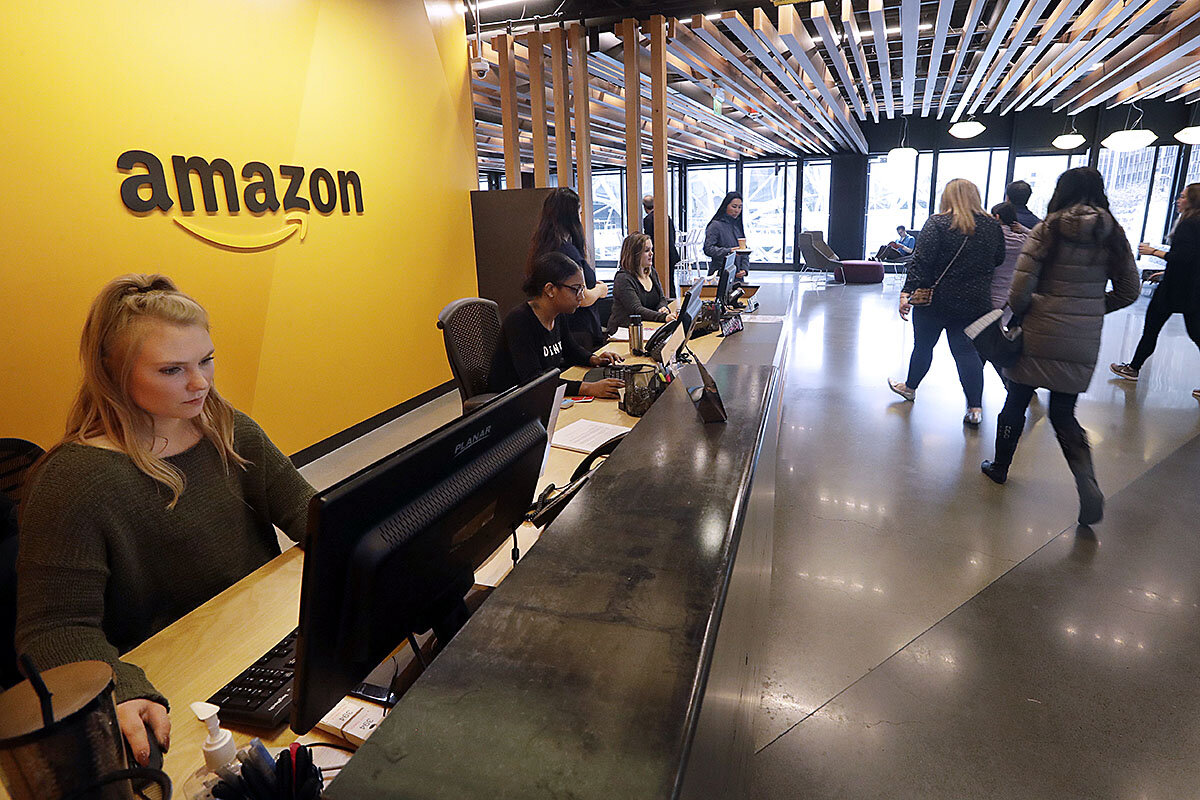
- Quick Read
- Deep Read ( 6 Min. )
Is geography economic destiny? It can seem that way when Amazon announces it’s going to split its second headquarters between New York City and greater Washington, D.C. Those metros are already superstar cities. They don’t need an extra 50,000 jobs the way other areas do. The phenomenon is hardly limited to Amazon. Between 2007 and 2016, the most prosperous one-fifth of ZIP Codes created more jobs than the other 80 percent of ZIP Codes combined, according to the Economic Innovation Group. What’s the answer? Inland states and metro areas can still prosper by pursuing business opportunities tailored to their regions, experts say. A key answer is also investing in seeds of jobs creation like worker skills, transportation infrastructure, and university research. On those fronts, extra federal help could be targeted toward less-advantaged places. Already a bipartisan feature of the 2017 tax-cut act gives incentives for investment in less-prosperous locales. John Austin, a development expert in Michigan, notes that Germany has a “national place-based effort to help all parts of the country achieve equal quality of life and economic opportunities,” adding, “It’s in their Constitution.”
Amazon’s new HQ picks stir debate over rise of ‘superstar cities’
The decision by Amazon to add new “headquarters” in New York and metro Washington, D.C., has laid bare a stark economic fact: Rich cities keep getting richer, while many other places are left behind in the race for new investment and jobs.
A year-long bidding effort by cities became a kind of “America’s Got Talent” contest for high-tech jobs. Amazon narrowed a lengthy list down to 20, dangling the prospect that the giant retailer might favor some unexpected inland city like Pittsburgh or Atlanta to set up its second HQ, with 50,000 jobs.
Instead Amazon went with cities that already rank as superstars. Splitting the HQ in two, the company will hitch its high-ambition future to the nation’s political capital and its financial and cultural capital.
The drama reveals a deeper challenge for America, beyond just what critics see as a self-destructive bidding war by localities to offer billion-dollar tax breaks and incentives to companies like Amazon. It’s the tendency of geography to become economic destiny.
Consider that, while all parts of the country were hit by the Great Recession, the recovery of jobs since then has been heavily centered in the most prosperous areas, whether measured by city or ZIP Code. By 2016, the one-fifth of ZIP Codes that rank as “prosperous” had 3.6 million more jobs than in 2007, a gain greater than the bottom 80 percent combined, according to the Economic Innovation Group, which advocates for more widely shared creation of businesses and jobs.
By contrast, the “distressed” ZIP Codes where 1 in 6 Americans live are unlikely to ever recover their lost jobs, unless current trend lines change, the group estimates.
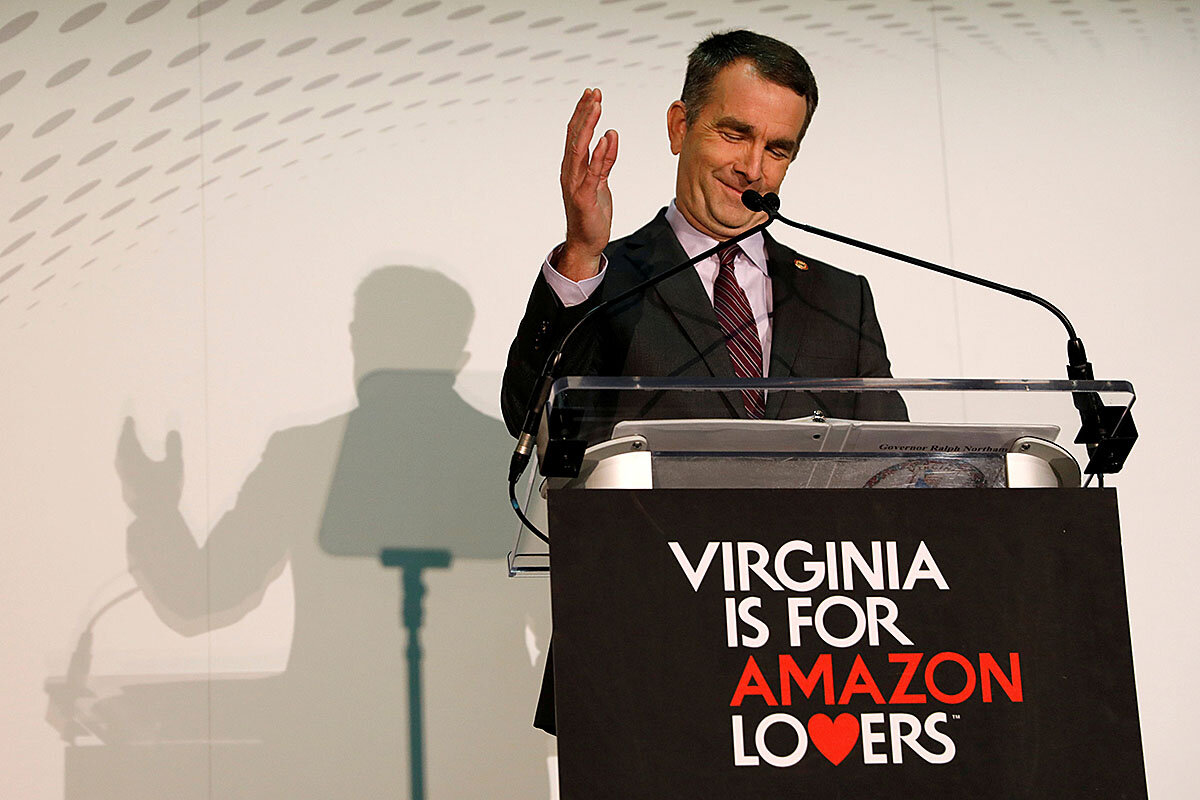
Cities across the nation aren’t blind to these challenges. But experts on economic development say new steps are needed, both in local and national policies, to help spread economic success more fairly and widely across America. The task has implications not just for material well-being but also for the nation’s political and social health.
“The real drivers of new economic activity are where there is innovation and talent generation and talent wanting to live there,” says John Austin, director of the Michigan Economic Center in Ann Arbor and a scholar with the Brookings Institution. “Accelerating that dynamic in more of our communities … would be healthy politically, so we wouldn't have these yawning divides of income, [of] opportunity in communities, and then angst and anxiety about the future and social change.”
Changing with the times
The good news, Mr. Austin notes, is that lots of metro areas have already been charting paths forward. Pittsburgh, one of the contenders for the Amazon “HQ2,” is a case in point, having transformed from a reliance on steel manufacturing into a hub for metal research, robotics, and other advanced fields.
“Minneapolis/St. Paul has been there for a long time,” he adds. “Indianapolis has gotten there now. Detroit and Cleveland are moving a little slower, but they’re getting there.”

Not everyone can be the headquarters of an $800 billion company that aims to dominate everything from the global retail industry to providing web-based data solutions for clients including the US military.
Losing the battle for Amazon may actually free cities to focus on the nuts and bolts of digital-era growth.
“Places should be creative,” says Steve Glickman, who co-founded the Economic Innovation Group as a bipartisan initiative. “I think there is really no such thing as a technology sector anymore. Everything is technology-enabled, and you have to find a way to play in that new economy.”
But if he’s bullish on the opportunities, he also sees a worrying level of inertia.
“You functionally can't grow an economy unless you’re creating new businesses that lead to new industries that create new jobs. [And] a smaller and smaller part of America is doing that,” he says. As he sees it, widening place-based gaps are one important factor behind the frayed political cohesion not just in the US, but in other countries with advanced economies.
Mixed blessing
Meanwhile, the growth of superstar cities isn’t easy, even on the winners.
Here in Arlington, Va., where Amazon’s new HQ will sit across the Potomac River from the US capital and adjacent to Reagan National Airport, residents see the company’s arrival as a mixed blessing.
“It’ll probably drive prices up” in an already expensive housing market, says Brian Conley, a government worker in Arlington, who lives nearby. But overall he says “it’s probably good for the area” because of “a lot of good jobs.”
As he speaks, he’s waiting for a ride on the Metro, the area’s decades-old subway system that’s already often crowded, delayed, or partially shut down for repairs.
“Commuting is somewhat challenging on its own,” even before Amazon and the added spinoff jobs that may arrive with it, says another worker in Arlington, who asked that her name not be used.
Similar questions about housing and commutes swirl around the Queens neighborhood known as Long Island City, where Amazon’s big new New York City venue will be located. (The company’s current HQ is in Seattle.)
In New York, Amazon will be able to tap into what’s arguably the world’s leading consumer and media marketplace to hone and promote its business. CEO Jeff Bezos, now the world’s richest person, will be able to hop between the two East Coast HQs by helicopter from his home in Washington, D.C.
But what can be done to distribute prosperity more widely across the US map? Policy experts see a range of promising options:
• End the metro arms race. Economists widely agree that efforts to shower incentives on companies, in order to lure them to particular places, is a waste of money – providing no net value to the nation while costing localities billions that could be spent on other needs. Ending or at least reducing the practice might be accomplished by some kind of collective accord, or with a nudge from federal policy.
• Deploy the right kind of tax incentives. Mr. Glickman sees great promise in policies aimed at bringing business in general – not any specific company – to economically disadvantaged areas. It’s not a new idea, but it could get a kick-start from a bipartisan feature of the Trump tax-cut act: incentives for “opportunity zones” that states identify based on need. Glickman now leads a venture called Develop, to promote such investment.
• Build individualized local strategies. Not every city boasts a world-class research university. But a rural community might have what it takes to be a player in local green energy, for instance.
• Invest in the seeds of jobs creation. In any city or region, things like education, worker skills, transportation infrastructure, and university research develop the roots for new businesses. And some experts say that, for greater social fairness in an era of superstar cities, some extra federal help for less-advantaged places is warranted.
Austin, in Michigan, notes that when he visited Germany’s industrial region he saw many of the same challenges that the US faces, but with a stronger policy role being played by the national government.
“They do have an explicit federal national place-based effort to help all parts of the country achieve equal quality of life and economic opportunities,” he says. “It’s in their constitution. We don’t have such a thing.”
“[Americans] understand the economy is changing. Their problem is they don’t think they're part of it,” says Rep. Ro Khanna (D) of California, who represents part of Silicon Valley and spoke with Monitor editors in Boston Friday. “They think when we talk about innovation, the economy, and entrepreneurship, all that investment is going to benefit my district. It’s not benefiting them.”
It’s time that they be included, he adds.

A deeper look
Why automotive automation may reach first for big rigs
Which jobs are likely to be automated by computers? More than you might think. This piece looks at a very human line of work and the value of being deliberate in pacing progress.
- Quick Read
- Deep Read ( 13 Min. )
Sixteen tons of aluminum and steel, handed over to an algorithm? Welcome to tomorrow on the nation’s highways. For decades, robotic devices have been remaking the world of work, principally on the factory or warehouse floor. But with advances in artificial intelligence, machines are poised to invade workplaces that once seemed immune to automation. One study found that 47 percent of jobs in the United States were at risk of being automated based on existing AI and robotics capabilities. And for all the hype about automated cars, there are a host of reasons why trucks may well begin hauling freight along highways, minus the grizzled trucker, first. Implications abound, for road safety as well as for jobs. Even robo-trucks need intelligent oversight. That calls for other kinds of evolution. But amid a sense of inevitability, the search for balance is on in earnest. “Every wave of automation, every productivity gain that we’ve had as a species, has always affected the status quo,” says one advocate of self-driving rigs. “In the long term, self-driving trucks will ultimately have the same effect.”
Why automotive automation may reach first for big rigs

On a muggy morning, Matt Brauneck noses his semi with its 53-foot trailer out of the yard, past the puddles left by a tropical storm. From his driver’s seat in the cab he has a clear view of the road and of the light suburban traffic leading to Interstate 75 in southeastern Florida. Atop the pearly-white cab are six cameras and three radar sensors that are feeding data to a computer stack behind Mr. Brauneck’s seat and to a remote operating base in Jacksonville, Fla., 300 miles away. Brauneck’s boss, Stefan Seltz-Axmacher, the head of a small robotics company, is wedged in the back. I’m sitting up front.
And we’re about to turn over command of 16 tons of aluminum and steel to an algorithm.
After the truck eases onto the highway, Brauneck talks into his headset to the technicians in Jacksonville. Ten minutes later he gets the all-clear: Time to engage automation. He turns a cracker-sized red knob on the dashboard and flicks a switch. “We’re rolling. It’s on,” he says.
Brauneck lifts his hands from the wheel, which jerks occasionally to correct our path. The accelerator pedal at his feet is working itself up and down, or so it seems, as we cruise along I-75. Brauneck says the first time he “drove” a truck in automation it felt like the first time he scuba dived. Like breathing underwater, “it didn’t feel right,” he says. Now it’s routine for him.
Yet it’s not routine for me. I can’t stop watching the twitching wheel. Outside, the narrow highway shoulder is hemmed by a 10-foot fence to keep out alligators from the surrounding swampland. I see vultures wheeling overhead – seriously.
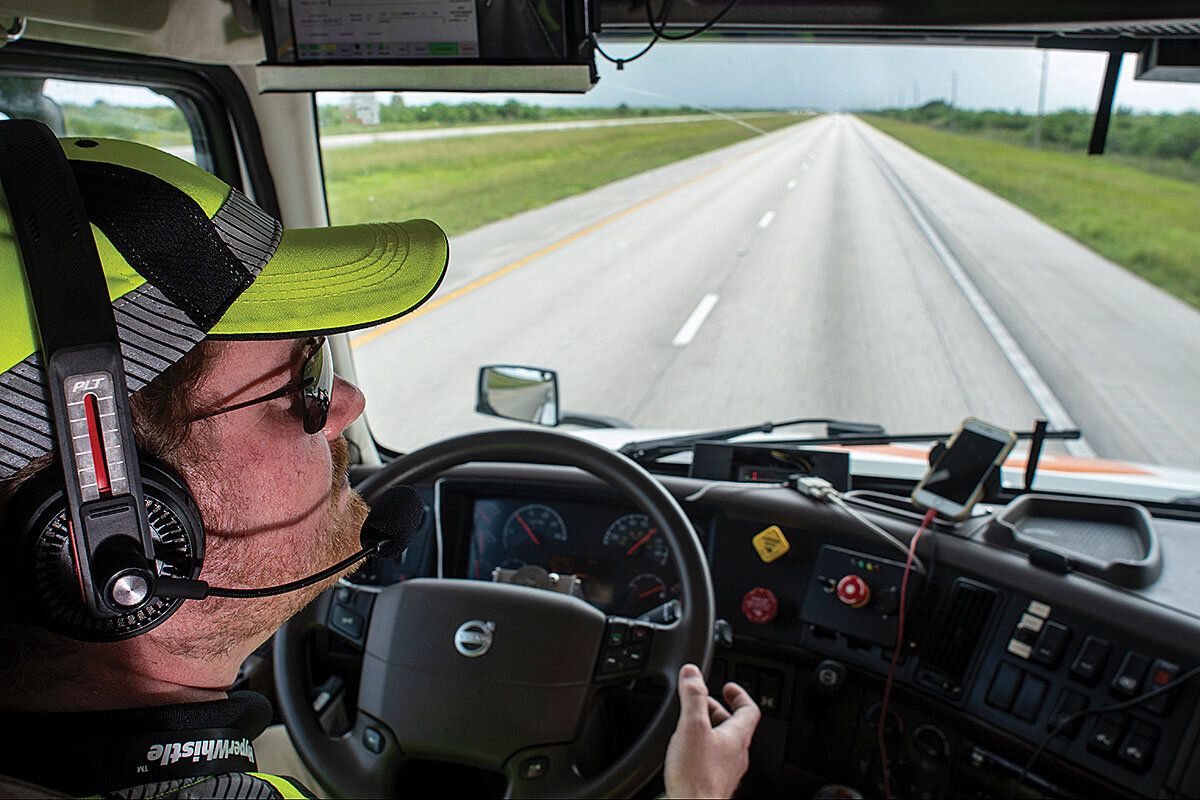
Welcome to tomorrow on the nation’s highways. Your local truck stop is one of the latest places where machines may soon replace jobs now done by humans.
For decades, robotic devices have been remaking the world of work, principally on the factory floor. They build our cars. They fetch our TVs and toasters in massive consumer warehouses. They weld the turbines used in jet engines.
But with advances in artificial intelligence, machines are poised to invade workplaces that once seemed immune to automation. A 2013 study by Oxford University found that fully 47 percent of jobs in the United States were at risk of being automated based on existing AI and robotics capabilities.
Transportation is one of the key areas where machines are on the march. People are both captivated – and frightened – by the prospect of self-driving cars pulsing through the nation’s streets. But for all the hype about automated cars, trucks may well begin hauling freight along highways, without the grizzled trucker at the wheel, first. Highway driving is more straightforward to automate than unpredictable urban driving and holds the promise of lower fuel costs, higher productivity, and improved safety.
Automated trucking is already a reality in remote mines and logging camps, and the US military has built its own robo-trucks to deploy in war zones. Volvo recently unveiled a prototype of an electric self-driving truck that doesn’t even have a cab for a driver.
While all this represents progress to many people, others worry about a looming loss of jobs. Andrew Yang, an entrepreneur and author of a book on automation, says AI could replace millions of semi-skilled humans in industries from fast food to retail. No job is immune, not even in white-collar fields such as accounting, insurance, and pharmacology.
“People talk about this as if it’s speculative and in the future, and we’re in the midst of it,” says Mr. Yang.
That warning may be premature – or prescient. What can the trucking industry tell us?
***
Sandwiched between two dump sites on the approach to Fort Lauderdale Airport, Florida 595 Truck Stop does not appear on any tourist maps. It’s a 50-acre expanse of cracked asphalt and gas pumps and green aluminum-sided buildings in the lee of a tangle of rumbling highways.
For truck drivers in South Florida, it’s an essential stop. It offers fuel and food, medical checkups and citizens band radios, drinks and banter at a cash-only bar, and showers in the back. There are 24-hour parking bays for more than 400 semis and buses. By some estimates it’s one of the country’s largest truck stops, servicing around 80,000 big rigs a year.
In a majority of US states, driving is the most common occupation, and of these workers who drive for a living more than 2 million operate heavy and tractor-trailer trucks. Long-haul truckers occupy an enduring place in popular culture – the romantic myth of the open road, with all its freedoms and rewards. After all, in what other industry do working-class people get paid to travel cross-country in mighty machines, setting their own hours and bonding with other roughneck road warriors at lonesome stops?
On a recent morning, Euripides “Ricco” Efthimiou sits outside on a plastic bench at the 595 stop, drinking coffee from a paper cup. Gas and diesel fumes waft over from the line of pumps. Mr. Efthimiou, who wears khaki shorts and a polo short, has an hour to kill before making a delivery in Miami in his truck, in which he slept the previous night.
Efthimiou started driving in 1982, and for most of his career he owned and operated his own rig. “Every five years I got a new truck,” he says. The best rates were for hauling equipment for the US military.
In the 1990s, for-hire driving became less lucrative. Efthimiou later sold his truck and took a job as a salaried driver for a luxury-goods store in Las Vegas.
If he had to start over, he’s not sure he’d do it again. “I tell these young kids now if you’re homesick don’t do it because this job, driving a truck, it can make you but it can break you,” he says.
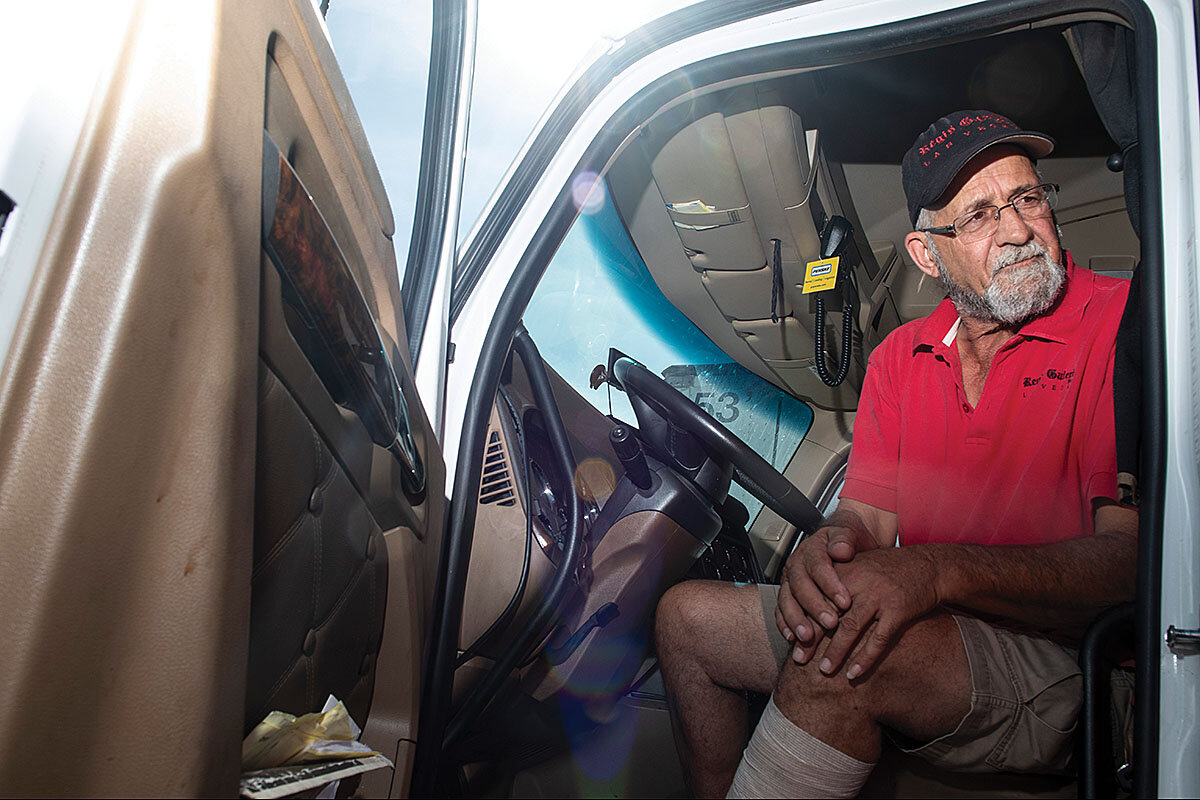
Most long-haul drivers work for regional or national trucking companies who pay per-mile rates that to the uninitiated appear to offer a path to middle-class security. Signs at truck stops advertise 70 cents a mile to qualified drivers. But once you factor in mandatory rest periods and loading and other unpaid downtime, say truckers, the hourly pay for driving 100,000 miles or more a year, spending weeks away from home, works out to barely minimum wage.
The average truck driver makes $42,000 a year, above the median national wage, but less in real terms than truckers earned back in the 1980s when trucking was still heavily unionized. Reagan-era deregulation drove down labor costs and spawned a cutthroat long-haul industry that has become more exploitative and antisocial, making it harder to recruit and retain drivers.
The industry is perpetually short of drivers, says Steve Viscelli, a sociologist who drove a truck for six months while researching his 2016 book, “The Big Rig: Trucking and the Decline of the American Dream.” American Trucking Associations puts the current shortfall at 50,000 drivers.
Mr. Viscelli says the big challenge is retention: Annual turnover at many trucking firms is 100 percent or more. “You just can’t keep people in these jobs,” he says.
Some truck drivers earn more. Parcel companies and private companies such as Walmart pay their drivers $60,000 to $70,000 a year, plus benefits, and turnover is lower. As for the allure of the open road, Viscelli found few true believers. “They will tell you, ‘Oh my God, the boredom of it. Mile after mile, and nothing to see.’ ”
***
The first time Mr. Seltz-Axmacher, the robotics chief executive officer, went to a truck factory he was a college freshman working at an auto parts manufacturer. It was the winter of 2008-09 and the global economy was reeling. But at the Mack Trucks plant in Allentown, Pa., all that Seltz-Axmacher could see were rows of gleaming semis.
He started asking questions. How much was a new truck? $150,000, give or take. The Mack official giving him the tour told him that most of the buyers were individual drivers. Wow, thought Seltz-Axmacher. Trucks cost as much as a Lamborghini. How can a truck driver afford a Lamborghini?
The company official then told him that truck drivers who own their rigs can make $150,000 in a year. Another double take from Seltz-Axmacher. “It turns out that that’s a big lie, a great way of duping the working class into driving trucks,” he says.
But at the time, the economics of hauling freight both fascinated and puzzled Seltz-Axmacher, who was a business major at Drexel University in Philadelphia. Several years later, in the summer of 2015, he was driving back from a weekend hike with his roommate, who built robots and had just quit his job. Seltz-Axmacher was working at a start-up in San Francisco.
What if you could drive a truck remotely? Seltz-Axmacher wondered aloud. Wouldn’t that be a better way to run a fleet? It was the seed of a business plan that became Starsky Robotics, which has since raised more than $20 million to develop its prototype trucks.
While his goal is to build driverless trucks that can haul freight on highways, Seltz-Axmacher still sees a role for drivers, who would handle tricky road situations and the final mile off the highway to a distribution hub, similar to a ship pilot guiding a tanker into harbor. Then they can clock off and go home to their family.

“Robots only make sense [in trucking] where there are labor shortages,” Seltz-Axmacher says. “Where they really shine is where you have to pay a lot of money to get a human to do something and you still can’t get a human to do it.”
Seltz-Axmacher has brown curly hair, small blue eyes, and a reddish beard. On the day of our test drive he wears shorts, flip-flops, and a gray-green Starsky Robotics T-shirt.
Florida is one of several US states that allow self-driving cars and trucks and is among the most flexible in regulating them. In Nevada, operators must put vehicles through 15,000 miles of testing before they can go on public roads. Florida makes no such demands: Starsky doesn’t even need a state permit. (The company also tests in California, which has much tighter rules.)
In February, a Starsky truck drove eight miles on a closed rural road in Florida without a driver on board, a first. Seltz-Axmacher
was filming from a car. “I was thinking, ‘If this thing jams on the accelerator I’m toast,’ ” he says, laughing.
For now, on public roads like today’s ride on I-75 through the Everglades, a safety driver such as Brauneck sits in the rig. Brauneck grew up in Palatka, a small mill town in central Florida, where he worked as a radio announcer in high school. A former TV repairman, he turned to trucking after the economy tanked in 2008 and hauled freight across 48 states.
“I loved being on the road,” he says. “I got to tour the country for free.”
As a driver for a driverless start-up, Brauneck is effectively working to eliminate his old job. He demurs at that description. What he’s doing, he says, is getting on the right side of evolution. “There’s always going to be a need for truck drivers,” he reasons. “You’re going to have to be at a higher level.”
***
How many truckers will ultimately be displaced by technology is a vexing question.
Seltz-Axmacher and other self-driving advocates say that the automation of long-haul trucking will lead to increased net demand for drivers as freight becomes cheaper. As more automated trucks ply interstates, more human drivers will be needed to deliver the loads that robo-trucks carry between dedicated distribution hubs.
Then there’s the job of driving robo-trucks remotely over the last mile using cameras and radars and other sensors, just as a drone pilot at a US military base flies the pilotless aircraft over Afghanistan.
For a glimpse of that future, I watch Brauneck disengage his automation system and exit I-75 and stop in a service center. Jeff Runions, the remote operator in Jacksonville, sits at a console with three monitors relaying images from the truck. I climb out of the cab and watch the truck, under Mr. Runions’s control, make wide turns around the lot, braking at stop signs and backing into bays.
When we’re ready, Runions steers the truck out of the lot and back onto the highway where we will engage automation. All the time, Brauneck is at the wheel, talking into his headset. But his hands are at his side. The truck is being remote-controlled, like a kid’s toy.
Backing up 53-foot trailers in narrow lots is just one of the skills that truck drivers must master – and another reason many drivers scoff at the idea that their jobs could be automated.
“You’re always going to need someone to drive a truck,” says Scott Carder, who lives in Leesburg, Fla. A high school dropout, he’s been driving long-haul for 18 years. In a good year, he says, he pulls in $70,000.
But for every entrepreneur seeing a bright future for truckers, there are other scenarios in which Mr. Carder is on the scrapheap, along with many other drivers.
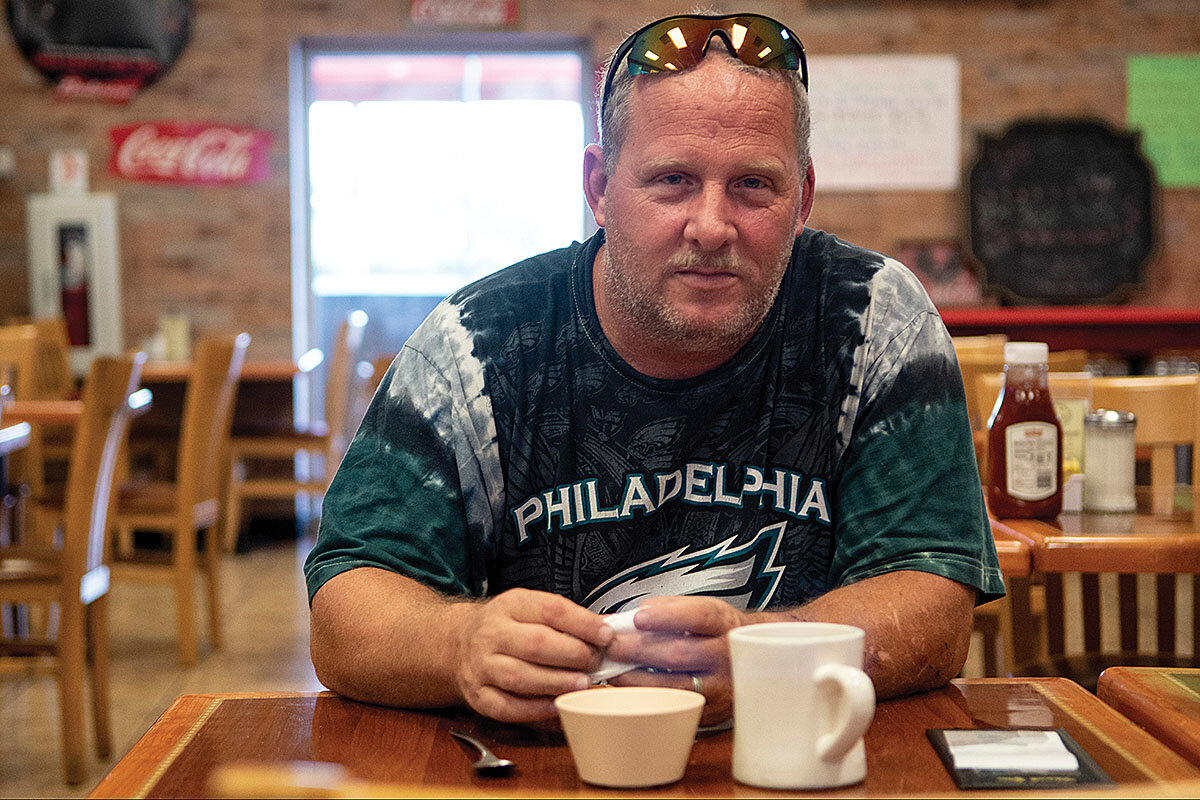
A report last year by the International Transport Forum estimated that driverless trucks could cut demand for human drivers in Europe and the US in half by 2030. A 2016 White House report said that AI-enabled automation could change or eliminate the jobs of as many as 3.1 million car, truck, and bus drivers.
For decades, advances in technology have delivered unimaginable levels of wealth and material progress, from mechanized farming to factory automation to cloud computing. They have also laid waste to entire occupations that machines could do better or cheaper.
Optimists point to the transition made more than a century ago from agriculture, in which half the US population worked at the time, to industrial production and services. The elimination of farmhands was more than offset by demand for workers in new jobs.
“Every wave of automation, every productivity gain that we’ve had as a species, has always affected the status quo,” says Seltz-
Axmacher. “In the long term, self-driving trucks will ultimately have the same effect.”
Yang, who is seeking the Democratic presidential nomination in 2020, argues that society simply isn’t prepared for the scale and pace of AI-related job elimination. This includes millions of truck drivers who he fears lack the skills and education to find decent paying jobs, particularly when retail and other service industries are also being remade by technology.
“You can’t think of a new industry that’s going to need hundreds of thousands of high school graduates,” says Yang, whose book is titled “The War on Normal People: The Truth about America’s Disappearing Jobs and why Universal Basic Income is Our Future.” “No one can think of one.”
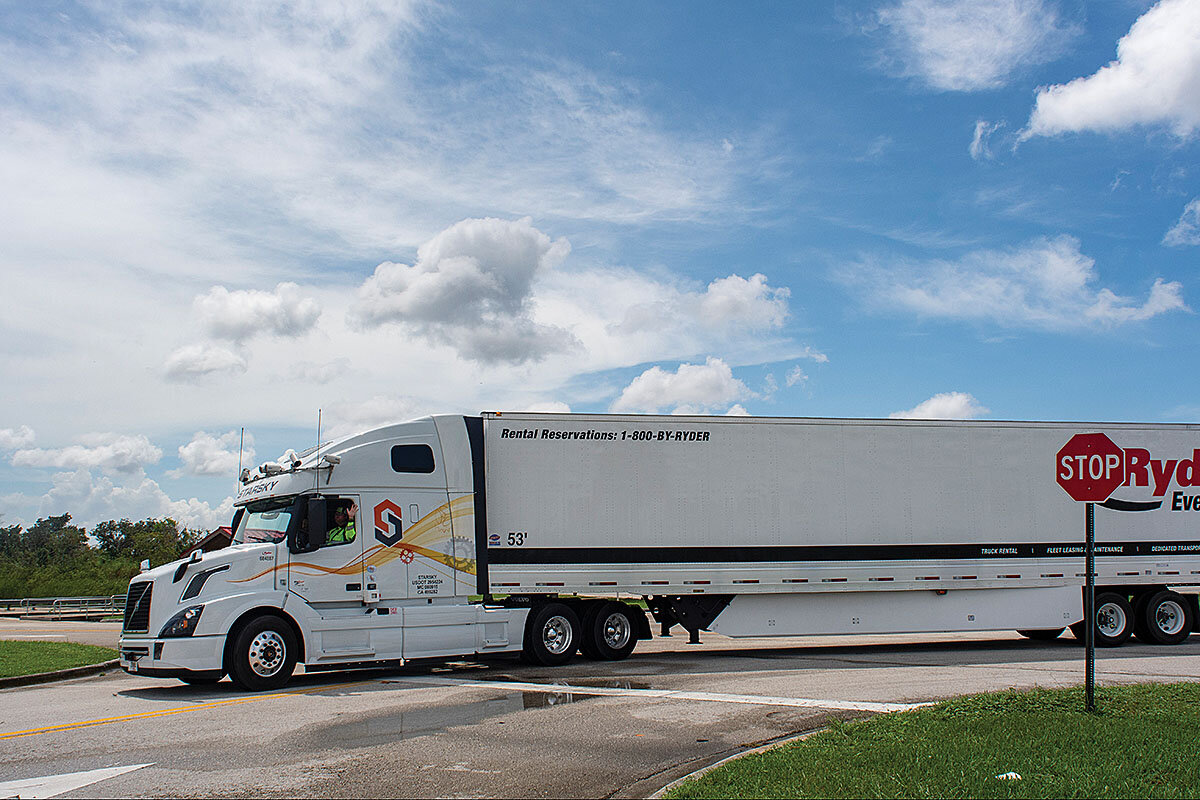
In a joint report for the UC Berkeley Center for Labor Research and Education and the Silicon Valley group Working Partnerships USA, Viscelli, the sociologist, estimates that automation could replace 294,000 long-distance drivers. But he also predicts that it will eventually create more jobs on short-haul routes.
What concerns him most is that the laid-off truckers, particularly those living in rural towns, could end up jobless or, more likely, driving on local routes that pay less.
“We’re going to have plenty of freight-moving jobs in 20 years because of the increase in truck services and delivery services,” he says. “But there’s no evidence that we’re looking at high-quality, high-wage jobs.”
***
Safety is a principal reason boosters of automated driving think the technology is so important to develop. In 2016, more than 4,300 people died in accidents involving large trucks, up 28 percent from 2009. Nearly all road accidents are the result of human error.
Yet safety, legal liability, and public concerns about self-driving make many people skeptical of predictions of imminent automation of trucking or other transportation fields. “It’s a huge leap to take a pilot of a couple of runs a week in a controlled environment and extract from that we’re at a point of commercial viability,” says Jeff Mason, managing director at FreightWaves, an industry publication. “We’re not there yet.”
Even if Seltz-Axmacher is right and robo-trucks are the future, you may not spot them immediately. Self-driving vehicles perform poorly in winter conditions, so the first automated trucks are likely to stick to warmer, less populated routes across the South and West.
Nor is it clear that these trucks will be unmanned. One proposal is that drivers alternate with self-driving systems, sleeping in the back on long highway stretches.
Last year Mack Trucks, the manufacturer that Seltz-Axmacher first visited, launched a new long-distance truck. The Mack Anthem has a radar-equipped collision avoidance system and lane monitoring. It’s also loaded with features designed to ease the driver’s burden, from noise reduction to a roomy sleeping compartment.
What it isn’t designed to do is displace human drivers, says Roy Horton, Mack’s director of product strategy, who is skeptical that self-driving trucks can currently handle the infinite number of variables that drivers face on and off US highways.
“We’re looking to provide solutions that help the drivers to do their job, be more safe, be more productive,” he says.
That’s not how Seltz-Axmacher sees the challenge for the trucking industry. He wants self-driving vehicles to mean just that. “If you still need a person in the truck, you haven’t solved the problem,” he says.
Starsky says it has only had one accident during testing, a rear-ender by another vehicle. The main hazard on highways, says Brauneck, is other drivers who buzz the truck to see how it responds. “I’ve had people slam on the brakes to try to screw us up,” he says.
Seltz-Axmacher’s next goal is to put a driverless truck on a public highway like I-75 without a safety driver, like Brauneck, in the cab. That may be months away and is ultimately a function of human judgment as much as machine learning, a reminder that technological progress is always shaped by social norms.
“I have to balance making us achieve the mission we want to achieve ... and being safe in the here and now,” he says. “If we never move, somebody else will. That somebody else might not put appropriate weight to that decision or think about it the right way.”
Look no hands

In Afghan vote, an optimistic, energetic young guard targeted the old
Afghan politics can seem a hopeless story of warlordism and corruption. But this past parliamentary election, there was a spark of something different.

- Quick Read
- Deep Read ( 7 Min. )
Afghanistan’s long-delayed parliamentary vote, held Oct. 20, was marred by insurgent attacks and sweeping organizational failures. But the elections, touted as a critical trial run for presidential elections next spring, also highlighted a new wave of budding politicians – the “defiant patriots,” as one analyst has dubbed them. This new generation is challenging the “old guard” politics that have dominated much of Afghanistan’s modern history: a system where elites have ruled with guns and cash, often along tribal and sectarian lines. With results expected Dec. 20, it is not yet clear how the new cohort measured up against more traditional candidates. “Can an idealistic, not rich, NGO-type win an election in Afghanistan?” asks Thomas Ruttig, co-director of a think tank in Kabul. “They can only do that when they link up with someone who finances them.” And even if they succeed at the polls, change won’t be easy, Afghanistan experts say. But in the face of threats and at a time of palpable hopelessness, this generation says it is committed to staying in Afghanistan, engaging in imperfect politics, and trying to become role models for change.
In Afghan vote, an optimistic, energetic young guard targeted the old

With sharp eyes and an articulate message, Afghan parliamentary candidate Shukria Jalalzai is on a mission of change, part of a vanguard of budding, new-generation politicians challenging Afghanistan’s “Old Guard” way of running things.
Ms. Jalalzai faced the same threats to win a seat as other candidates. One Taliban insurgent was blunt, when he called her:
“Shukria, we have some rockets as a gift for you,” he told the 27-year-old civil society activist. “Where should we send them?”
But that’s where the similarities with politics-as-usual ended for Jalalzai and her fellow “defiant patriots,” as one analyst has dubbed the members of this younger cohort. They aspire to nothing short of upending a culture of warlord-heavy politics that they blame for 40 years of conflict and corruption.
The parliamentary vote was finally held on Oct. 20, delayed for years by factional disputes over rules, with final results expected on Dec. 20. During two days of voting, some 250 insurgent attacks left at least 50 people dead.
More than 2,500 candidates competed for the assembly’s 250 seats, 68 of them reserved for women, in a vote widely touted as a critical trial run for presidential elections next spring.
At a time of palpable hopelessness across Afghanistan – where colossal problems of security, Taliban advances, and the increased legions of Afghans displaced by war, violence, and drought have all been compounded by the chaotic handling of the election – this new generation is determined to find reasons for optimism, and to act.
Despite the risks, and perhaps small chances of success to challenge a system long dominated by entrenched strongmen and well-endowed interests, these educated Afghans are choosing not to abandon their country for the West, as many of their peers have. Instead they are staying home, engaging in imperfect politics, and trying to become new role models for change.
“My main message is that we can build this country, not others,” says Jalalzai, who, despite her relative youth, has worked for years on civil society projects, especially for Afghan women and orphans. She was among 108 women running for 9 seats in Kabul.
Foreign forces “will not remain forever,” says Jalalzai in excellent English, her embroidered teal shawl capped by a black headscarf with gold trim, worn in a no-nonsense way. “If the US or others go out from Afghanistan, what do you have? We should study. We should work. And we should change our mindset. If we don’t change, it means we are going to a worse situation every day.”
Jalalzai knows the challenges and explains how she had to “accept that maybe I will fail,” because she refused to accept outside money or the support of a large political party.
“It’s a big challenge, but it’s not impossible that our generation can change the order of power,” says the candidate, who ran as an independent.
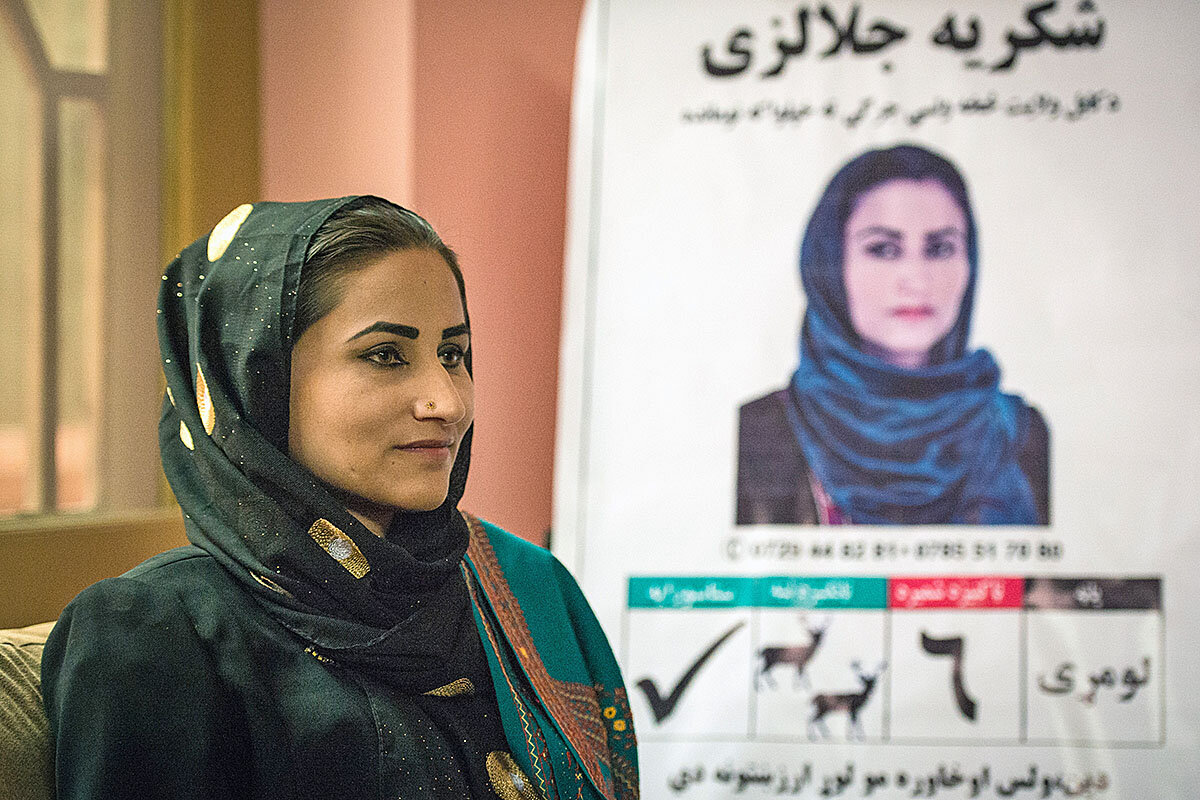
Uphill battle
With final results still unknown, it is not yet clear how self-declared new-generation candidates measured up against Afghanistan’s Old Guard elites, who have ruled with the twin tools of guns and cash – often along tribal and sectarian lines – for much of Afghanistan’s modern history.
Even after US forces engineered the fall of the Taliban in late 2001, Afghan “democracy” has been defined by more traditional mechanisms, with few limits placed on former warlords playing outsized roles.
Yet even with the emergence of a new generation committed to more democratic norms, change won’t be easy, say Afghanistan experts.
“There is something I call ‘defiant patriotism,’ which says: ‘We are staying here.’ But of course a lot of them belong to the elites, or this new-but-still-precarious middle class,” says Thomas Ruttig, co-director of the Afghanistan Analysts Network think tank in Kabul.
“I thought this youth wave was a bit talked up,” says Mr. Ruttig. “The system has been so corrupted and dollarized, because you need a lot of money to get into parliament. So can an idealistic, not rich, NGO-type win an election in Afghanistan? They can only do that when they link up with someone who finances them. And I think the people who are really philanthropists, who want a democratic parliament and a democratic Afghanistan, are in the minority.”
Not every son or daughter of a warlord who is running shares the psychology of their father, says Ruttig. “But family ties are very strong here, and from them it’s expected that they look after the interests of their families. It’s very difficult to say: ‘No, I’m not interested. I want democratic politics,’ ” he says.
Despite years of preparation, the vote itself was marred by organizational failures, from lack of a reliable voter registry, to just more than 5,000 out of 7,000 polling stations being opened, to last-minute implementation of a confusing biometric voter verification system.
The result is “unprecedented disenfranchisement” of Afghans, says Ruttig, with at most 4 million ballots cast despite the existence of some 8.9 million registered voters and an estimated 12 million potential voters.
The risks of running
Coping with such weak institutions is just one of the challenges for those attempting to bring fresh air and optimism to a political scene very short of both. Another is the urban-rural divide, such that older, more conservative Afghans from rural areas might be unhappy with the current leadership, but “also don’t necessarily have enough trust in the younger urban elites,” says a Western official in Kabul who asked not to be named.
And those who are able to bridge those two Afghan worlds are most at risk, says the official, noting the shooting death on the eve of the campaign of one young candidate from the staunchly conservative southern city of Kandahar, birthplace of the Taliban.
Nasir Mubarez was both a civil society activist and socially conservative. And he challenged the palace in Kabul, too. Few doubt he was killed by the Taliban.
“He was a good fit because he knew his constituencies well, he knew how to juggle the competing demands and ideas,” says the Western official. “He had enemies on all sides, but that made him appealing to many others, because people saw him as somebody really fighting for what people wanted.”
Mr. Mubarez’s killing – one of 10 or so candidates who lost their lives before voting day – was a setback for those who put stock in a new crop of Afghan politicians. It showed their vulnerability, unless they had the traditional protections of a militia or money.
“It’s really difficult for the young generation,” says the official. “They might have the [popular] support, but last minute [voters] might switch back to the Old Guard because they think, well, you have our support, but this does not translate to a seat at the table of power.”
'I don't want to buy their votes'
Trying to gain such a seat is Zakia Wardak, a widow with a master’s degree in architecture and a sophisticated manner, who lived in the US for years, founded her own engineering company in Afghanistan, and has a history of working for women’s empowerment.
She also has a powerful pedigree: Ms. Wardak’s father was a general who fought the Soviets in the 1980s, and was killed. Her late husband was a commander. Her brother was a general, too, and a well-known military analyst who planned to run for parliament – until he was assassinated in August.
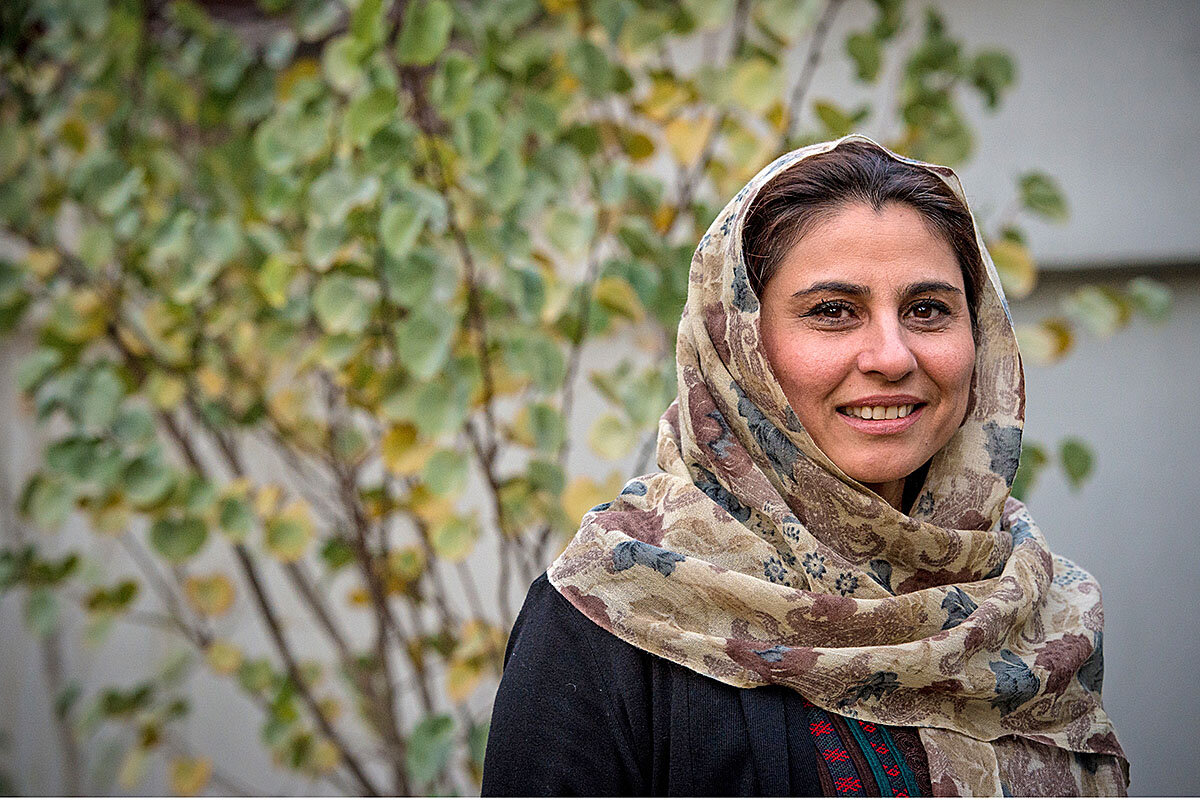
“Serving people is in our blood,” says Wardak, who decided to join the race after her daughter Mariam – part of the new generation of Afghans herself, who is US-educated and a grassroots organizer – said she could help bridge the wide gap between Afghans and their government. Wardak was taken aback by endless requests for cash and jobs, which she rejected.
“My voice spread out, and everybody knew that I am not someone who wants to put money in somebody’s pocket. I don’t want to buy their votes,” says Wardak, wearing an earth-tone headscarf with flower designs.
“The sad part is, money can do a lot of things in Afghanistan. Very rarely a person without money can do something,” she says. “People familiar with the current order know how to run it.”
But Wardak says she wants to provide a different role model.
“A lot people encouraged me, especially men, which was a surprise,” she says. “They were telling me: ‘A lot of damage has been done to this country by men. We need women leaders.’
“I hope there will be big changes in parliament this time, with new faces, a young generation, young energy, and also people who are thinking positively and more loyal to the national interest,” she adds.
“Students came to me who were living in the dorms. When I was looking at their shoes and their socks, I was crying for them,” she says. “They were telling me: ‘We don’t want money. We came here because we believe in you … because we want a good future.’ ”

Books
The best reads of November? Here are your Monitor staff picks.
What books should you be reading? The best titles released this month include a look at a crucial perspective shift on slavery before the American Civil War and a hilarious trip into Tsarist Russia with a Scottish librarian/martial artist.

-
By Staff
The best reads of November? Here are your Monitor staff picks.

1. Miss Blaine's Prefect and the Golden Samovar, by Olga Wojtas
In Olga Wojtas's novel, exquisitely educated Scottish librarian Shona McMonagle (“crème de la crème” alumna of the Marcia Blaine School for Girls) is catapulted on a mission back in time to Czarist Russia. Shona, now known as "Princess Tamsonova" and a mighty linguist, musician, and martial artist, outwits aristocrats and serfs in this hilarious caper of manners and mayhem. It's a tour de force debut novel.
2. All the Lives We Never Lived, by Anuradha Roy
The themes of freedom and revolution echo through the book as an older gentleman pieces together childhood memories of his artistic mother as he tries to understand why she abandoned him so many years ago. Set in the 1980s, his tale reaches back to India’s fomenting pre-revolutionary era that led up to World War II, and the insights and lessons ring just as true today.
3. The War Before the War, by Andrew Delbanco
"War" is a richly detailed, thought-provoking, and compelling chronicle of how fugitive slaves made the North and South grow further apart. Author Andrew Delbanco details how those who ran away from their masters brought the reality of what slavery was actually like to Northerners' doorsteps.
4. The End of the End of the Earth, by Jonathan Franzen
The new work from acclaimed author Jonathan Franzen is a collection of crystalline thought pieces and nonfiction stories. The subject matter is varied and includes his beloved birds and his rules for a novelist.
5. Heirs of the Founders, by H.W. Brands
Yes, there was Washington, Jefferson, Hamilton, and Adams – but what about the generation of politicians that was born during the American Revolution and had to lead after the Founding Fathers? H.W. Brands's new book explores the political careers of figures including Henry Clay, Daniel Webster, and John Calhoun, political rockstars who inherited both the glories and flaws of the US Constitution.
6. Fryderyk Chopin, by Alan Walker
Alan Walker's thorough biography leaves Chopin's legacy as pure and poetic as his “Polonaise, Op. 53 in A Flat Major.” This work will probably be a top contender for literary biography prizes.
7. The Betrayal of Mary, Queen of Scots, by Kate Williams
Most readers likely know (or think they know) the story of the 16th-century monarch. Author Kate Williams expertly and entertainingly tells the story of the queen's life and its end, brought about by her cousin, Queen Elizabeth I.
8. The Tale of Cho Ung, translated by Sookja Cho
The fascinating story, which became popular in Choson Korea, is translated into English for the first time. Translator Sookja Cho manages to motivate scholars to build on the foundation she has created and inform English-speaking readers about the classic.
9. Churchill, by Andrew Roberts
New material, including transcripts from War Cabinet meetings and King George VI's diary, allows Roberts to give more insight into the legendary statesman.
10. We Begin in Gladness, by Craig Morgan Teicher
Author Craig Morgan Teicher explains how poets teach themselves to write their best in his latest book (the title is from William Wordsworth). Teicher’s best insights are ultimately about poetry’s connection to the sublime.
Other headline stories we’re watching
(Get live updates throughout the day.)The Monitor's View
A key ingredient in Amazon’s selection process
- Quick Read
- Deep Read ( 3 Min. )
-
By the Monitor's Editorial Board
More than 200 places vied to be a second (or third) headquarters for Amazon. In many of them, local leaders came together to offer incentives. In some cities, many of the proposed projects, such as transit improvements, may now go ahead anyway out of newfound cooperation over a shared vision. This is a key lesson learned after decades of attempts by governments, businesses, and foundations to target investments in particular places, especially distressed ones. Local stakeholders must show social cohesion and a sense of a common destiny. Tax breaks can be attractive. Commute times and housing costs must be considered. But intangibles like trust, unity, and caring within a community make the ultimate difference. Amazon’s final selections – New York and northern Virginia – are already well on their way to being big growth centers, so the move won’t necessarily increase opportunity and reduce regional inequality. But for nearly 35 million Americans, a new federal incentive for private investment in impoverished areas may help balance out growth in the United States. Opportunity knocks. Will communities open the door?
A key ingredient in Amazon’s selection process
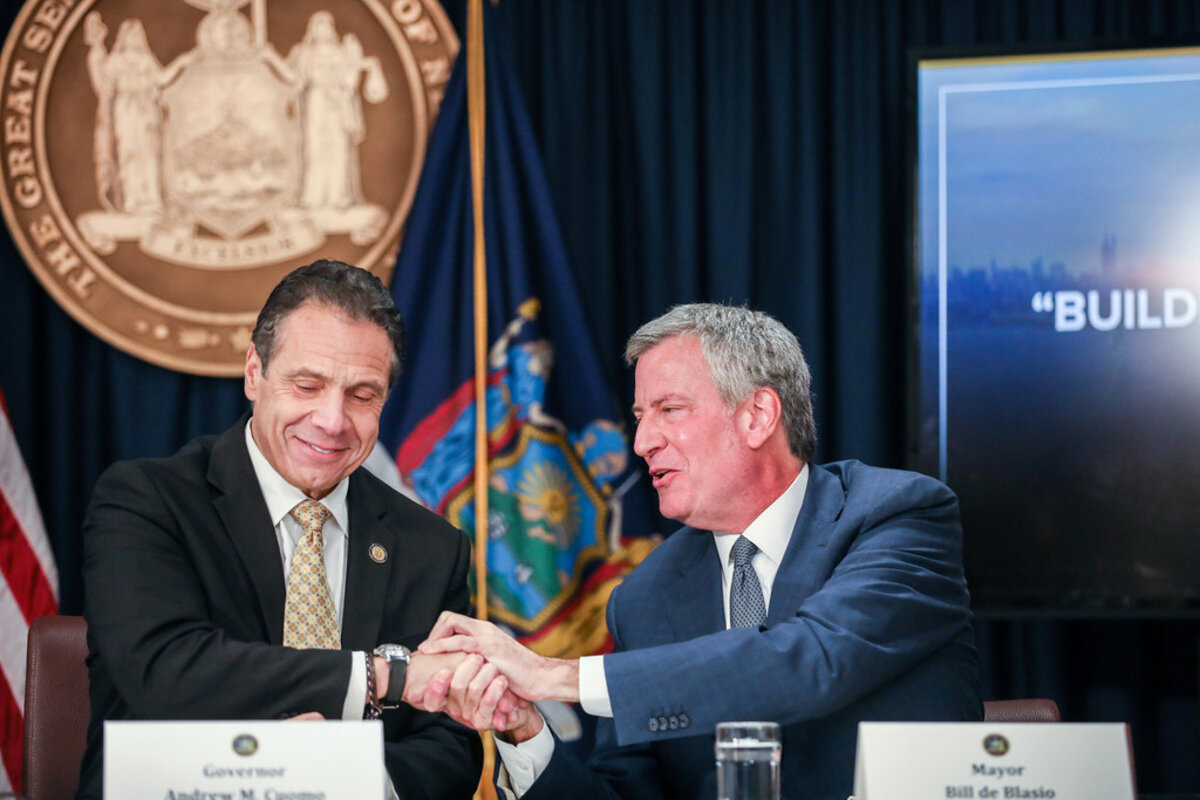
In its selection of New York City as one of two places for a new headquarters, Amazon revealed a key necessity for such a big investment in one community. The tech giant first had to make sure that Mayor Bill de Blasio and Gov. Andrew Cuomo would get along in shepherding the project. The two politicians are rivals. Yet with a mutual incentive to uplift Queens’s Long Island City, the two decided to put aside their differences.
More than 200 places vied to be a second (or third) headquarters for Amazon. New York was hardly alone in discovering that it must show the whole community was engaged and on board. In many of the competing places, local leaders in business, education, and government came together to offer financial incentives, promise upgrades, and consider other inducements. In some cities, many of the proposed projects, such as transit improvements, may now go ahead anyway, simply out of newfound cooperation over a shared vision.
This is a key lesson learned after decades of attempts by governments, businesses, and foundations to target investments in particular places, especially distressed ones. Local stakeholders must show social cohesion and a sense of a common destiny. Tax breaks can be attractive. Having a good university may help. Commute times, housing costs, and nightlife for younger workers must be considered. But intangibles like trust, unity, and caring within a community make the ultimate difference.
Amazon’s 14-month selection process came at a good time. Under a new federal program embedded in the 2017 tax overhaul, investors of almost any kind will soon be granted a long-term tax incentive to put money into low-income areas known as “opportunity zones.” More than 8,700 such zones have already been designated by states and approved by Washington. Final rules for the investments will be in place early in 2019.
The tax incentives are so generous that the think tank behind the idea, the Economic Innovation Group, estimates that as much as $6.1 trillion now held by both corporations and households could be invested in both rural and urban communities. The concept builds on previous “place-based” investment schemes, such as President Barack Obama’s Promise Zones program. Scholars who study such programs say most have largely failed. They will be watching this latest – and bipartisan – effort closely.
What could succeed this time is that investors, who must put up money for more than a decade to get a big tax break, will be very careful in choosing a low-income community that has come together to support big and small investors. Amazon’s selection process was a very public model for this approach.
Amazon’s final selections of New York and northern Virginia’s Crystal City are not a model in one respect. The two places are already well on their way to becoming big growth centers. The purpose of the opportunity zones is to reduce regional inequality in the United States and the concentration of high-growth, high-tech megacenters like Boston and Silicon Valley.
Nearly 35 million Americans live in the newly selected zones, many of them in poverty and without higher education. Previous development schemes have failed them. But like the mayor and governor in New York eager to attract Amazon, they and their local leaders may now come together to bring in investments. Opportunity knocks. But will communities open the door?

A Christian Science Perspective
Each weekday, the Monitor includes one clearly labeled religious article offering spiritual insight on contemporary issues, including the news. The publication – in its various forms – is produced for anyone who cares about the progress of the human endeavor around the world and seeks news reported with compassion, intelligence, and an essentially constructive lens. For many, that caring has religious roots. For many, it does not. The Monitor has always embraced both audiences. The Monitor is owned by a church – The First Church of Christ, Scientist, in Boston – whose founder was concerned with both the state of the world and the quality of available news.
Beyond political division
- Quick Read
- Read or Listen ( 1 Min. )
-
By Mark Sappenfield and Deborah Huebsch
Here’s a podcast conversation between the editor of the Monitor and a Christian Science practitioner and teacher. They share spiritual insights on a subject that’s front and center these days: How can we get beyond the political division that’s so prevalent?
Beyond political division
For those accessing Mark and Deborah’s conversation through The Christian Science Monitor’s website, please click here.

A message of love
Order up!

A look ahead
Thank you for joining us today. Please come back tomorrow when we look at how communities can better adapt to the kinds of wildfires we’re seeing in California. There are more tools than you might imagine. The challenge is getting people to use them.


